promoting urban cycling through blockchain
Abstract
The promotion of urban cycling is not an easy goal to achieve and financial incentives could not be enough. Bike-sharing schemes have been quite successful, but more can be done and blockchain is stepping in to help.
Exploiting the features of this technology we can trigger a circular system based on tokens, means of exchange to use the service. The incentive is to get a certain amount in return, following an assessment carried out by a DAO, in order to continue using the service, without extra charges.
Introduction
Transport is the main cause of air pollution in Europe and road transport is by the biggest accounting greenhouse gases which harm human health and the environment. As cities become denser there is a necessity to turn into mobility solutions to address these issues.
Some of these gases as nitrogen oxides are responsible for 79.000 premature deaths in Europe per year and contribute to acidification and eutrophication, which cause serious damages to ecosystems.
Road transportation in cities could be replaced by different alternatives such as cycling which is cheap, healthy and space efficient. Benefits of cycling are many and varied. In terms of health, for example, it reduces the risk of heart diseases, on the economic point of view it is easily affordable (about 80% of the population can afford a bike) and on the environmental side it uses minimal fossil fuel.
Despite this, the change of our mobility habits is still too slow and although in recent years efforts have been made to encourage the use of soft mobility solutions, other policies and incentives are still needed to promote its use.
Bike sharing systems represent one of the most successful strategies in this field and the purpose of this work is to enhance the impact and dissemination of this solution among citizens through blockchain technology. Bike sharing companies are usually public-private partnerships where the main characteristic is an attractive price for the use of the service in order to attract the largest number of users (the largest sources of funding come from other municipal revenues and sponsorships). Although simple, this could not be enough and for this reason blockchain can step in to help.
This project exploits the features of this technology triggering a circular system based on tokens. Thought as a medium of exchange into the system, it allows cyclists to continue using the service without extra charges.
How it works
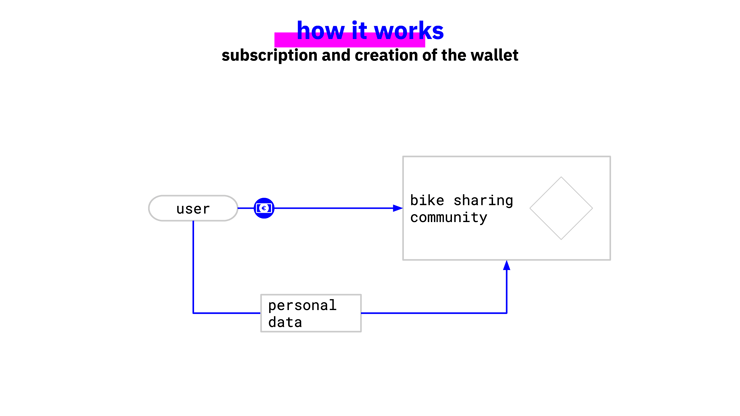 When subscribing, the user will create his personal wallet (if not in possession) in order to obtain from the company the first supply of tokens, equal to the price and the kind of subscription paid, and essential to the use of the service.
When subscribing, the user will create his personal wallet (if not in possession) in order to obtain from the company the first supply of tokens, equal to the price and the kind of subscription paid, and essential to the use of the service.
Tokens taken into account are utility tokens, since they will be exchanged for a service.
In this first transaction the user will also share his personal data, always transmitted to the company through blockchain. A way that makes the process more efficient and safe and increases trust between the two parties.
After the subscription, with tokens in his wallet, the user can enter the system for all intents and purposes. His tokens will allow him to use the bike and while using the service the system will collect some data, such as time of use, distance travelled and information about the trip (as point of departure and point of arrival). A process very similar to the existing, but with the possibility to add qualitative data (i.e. road and traffic conditions, hazards encountered on the way, etc.) that could be very useful for the company and which would otherwise be difficult to collect.
Also in this case the use of blockchain for these transactions is crucial because we can rely on transparency, efficiency and trust.
But the collected data are important also for another reason: once rental is over, with the transmission of this data related to the journey, a request to redeem “premium” tokens will be triggered.
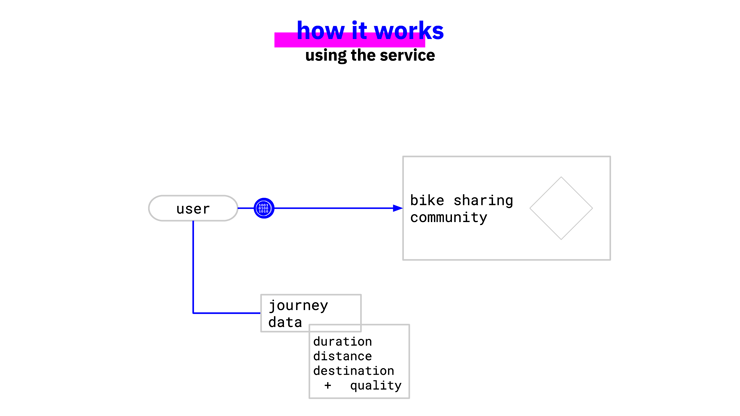 In fact, the supply of these new tokens will be governed by an automated DAO (Decentralised Autonomous Organization) that will establish the amount of tokens that users will receive back.
In fact, the supply of these new tokens will be governed by an automated DAO (Decentralised Autonomous Organization) that will establish the amount of tokens that users will receive back.
The evaluation of data provided is based on three fixed parameters (duration, distance and destination) and a variable input related to qualitative data provided (a predetermined amount of “bonus” tokens).
The reason behind this choice is related to the principal challenges that we declared to tackle. The duration of the journey is linked to public health, in fact the more time you spend cycling, the more tokens you will receive (first incentive). The distance is linked to the environmental issue, because it encourages people to leave the car behind and use the bike for longer distances as well (second incentive). While the destination is related to the mobility issue, which in turn is linked to economic aspects because this third incentive deals with the will to push people towards poorer districts, in order to improve their micro-economy.
The cryptourbanomics model
As part of the blockchain characteristics the following table includes how these characteristics relate to the “bikechaining” system including the purpose of the system and the technical parameters.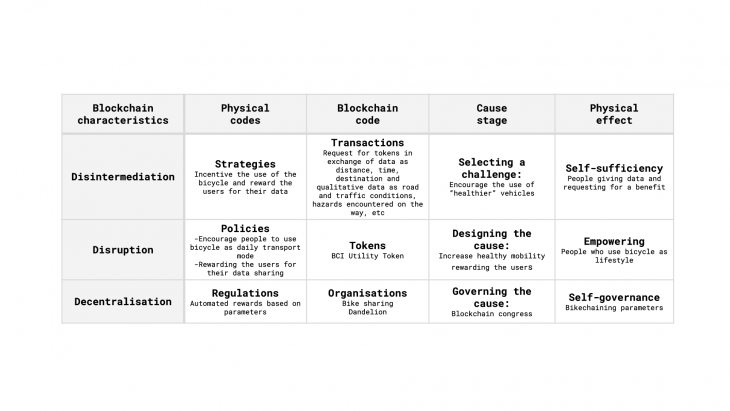
Technical aspects: creation of a wallet, request of tokens, creation of a DAO
As part of the process to receive the tokens and start using the platform we put a gif with the steps to download and configure the wallet, using Metamask wallet, Rinkeby network and the utility tokens created for the project.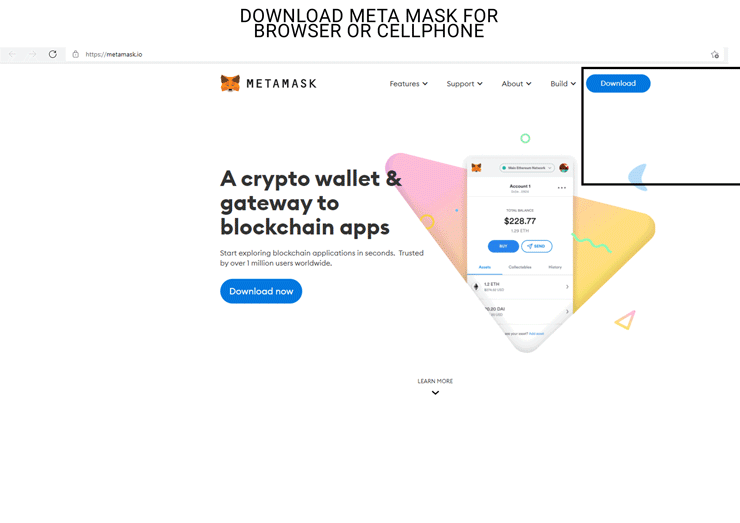
The original idea of the project is to set up a DAO based on an algorithm that can evaluate automatically the requests of tokens. Essentially because it is based on the 3+1 parameters previously shown (duration, distance, destination + qualitative data) that can be included in the transaction towards the decentralized autonomous organization. But despite this, we tried to choose the best template that could fit for our case among the different templates that Aragon (on Rinkeby network) can provide. Dandelion includes a lot of interesting features, so we were able to create an organization filling the requested fields with the characteristics that we wanted to add to our project. The most useful app that we could apply to our project is related to the request of tokens and we showed an example.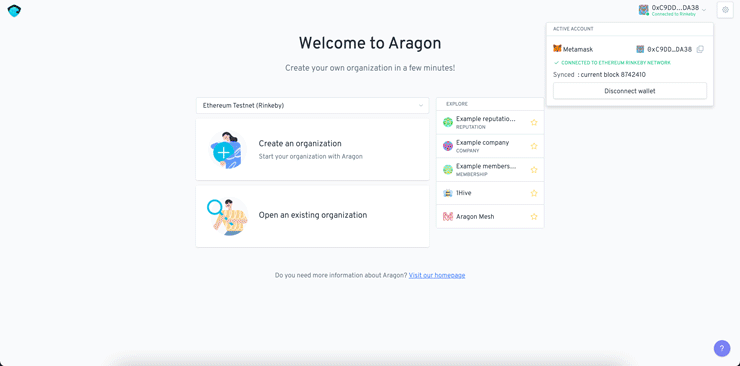
Bikechaining is a project of IAAC, Institute for Advanced Architecture of Catalonia developed in the Master in City & Technology 2020/21 by students: Matteo Murat, Miguel Angel Tinoco and faculty: Maria-Luisa Marsal Llacuna.